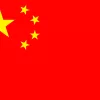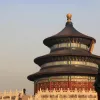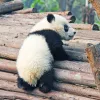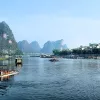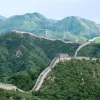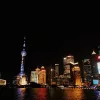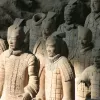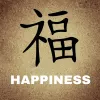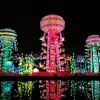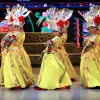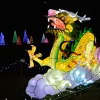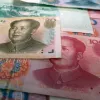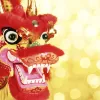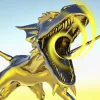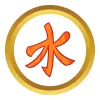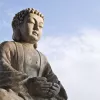Important update from TheSchoolRun
For the past 13 years, TheSchoolRun has been run by a small team of mums working from home, dedicated to providing quality educational resources to primary school parents. Unfortunately, rising supplier costs and falling revenue have made it impossible for us to continue operating, and we’ve had to make the difficult decision to close. The good news: We’ve arranged for another educational provider to take over many of our resources. These will be hosted on a new portal, where the content will be updated and expanded to support your child’s learning.
What this means for subscribers:
- Your subscription is still active, and for now, you can keep using the website as normal — just log in with your usual details to access all our articles and resources*.
- In a few months, all resources will move to the new portal. You’ll continue to have access there until your subscription ends. We’ll send you full details nearer the time.
- As a thank you for your support, we’ll also be sending you 16 primary school eBooks (worth £108.84) to download and keep.
A few changes to be aware of:
- The Learning Journey weekly email has ended, but your child’s plan will still be updated on your dashboard each Monday. Just log in to see the recommended worksheets.
- The 11+ weekly emails have now ended. We sent you all the remaining emails in the series at the end of March — please check your inbox (and spam folder) if you haven’t seen them. You can also follow the full programme here: 11+ Learning Journey.
If you have any questions, please contact us at [email protected]. Thank you for being part of our journey it’s been a privilege to support your family’s learning.
*If you need to reset your password, it will still work as usual. Please check your spam folder if the reset email doesn’t appear in your inbox.
China
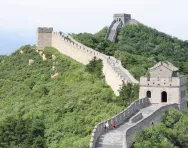
Where is China?
China is a large country on the southeast coast of Asia. The capital of China is Beijing. A person who is from China is Chinese, and the main language that most people speak is Mandarin.
Countries on the border of China include Mongolia, Vietnam and North Korea. At 5,000km from east to west, and 5,500km from north to south, China is a very big country with many different terrains. There are mountains, forests, deserts, grassland and coastal habitats in China, and a variety of climates in each region.
You can print out all the main facts included in this Homework Gnome for free as a registered user of TheSchoolRun.
Top 10 facts
- China’s official name is the People’s Republic of China, and the capital is Beijing.
- Over 1.3 billion people live in China, which is more people than any other country in the world.
- The largest city in China is Shanghai.
- The currency in China is the yuan.
- The two main rivers in China are the Yellow River and the Yangtze River.
- Mount Everest, the tallest mountain in the world, is on the border of China and Nepal.
- Animals that live in China include the giant panda, snow leopard, red panda, Chinese alligator and Bactrian camel.
- Until 1912, China was ruled by emperors.
- Chinese inventions include paper, gunpowder, porcelain and silk.
- The main language in China is Mandarin, but there are many versions of Chinese that people speak – these are called dialects.

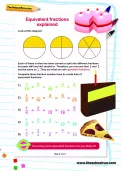
Boost Your Child's Learning Today!
- Start your child on a tailored learning programme
- Get weekly English & maths resources sent direct to your inbox
- Keep your child's learning on track
Did you know?
- The largest city in China is Shanghai, which has 4 million more inhabitants (people living there) than the capital, Beijing.
- The third-largest river in the world is the Yangtze River.
- The Chinese language is made up of characters rather than letters as the English alphabet is. Writing each character is like drawing a tiny picture. In school, Chinese children won’t learn the alphabet like you did – they’ll start learning a few characters and how to write them, and keep learning more and more as they get older.
- People in China pay for things using yuan. Ten yuan is worth about the same as £1. You can see an example of a yuan note below.
- It is common for all the family to live together – grans and granddads with live with their sons and daughters and grandchildren in the same house.
- In China, last names come before first names. Switch your names around – that’s how it would be written in China!
- In China, the dragon symbolises good luck. Red is the symbol for happiness.
- The Chinese New Year is the biggest celebration of the year. It happens about a month after our New Year's Day on 1 January. Everyone turns one year older on Chinese New Year – so it’s no wonder that it’s such a big party!
- In China, food is eaten with two chopsticks, which are used like tweezers to pick up pieces of meat, rice or vegetables. Spoons are used only for soup.
Look through the gallery below and see if you can spot the following:
- The Chinese flag
- Chinese food: dim sum
- The Temple of Heaven in Beijing
- A panda
- Rafts on the Li River
- The Great Wall of China
- Chinese lanterns
- Shanghai's skyline
- The Terracotta Warriors
- The Chinese character for happiness
- Chinese New Year celebrations
- Chinese traditional dancers
- A dragon light show
- The Chinese currency, the yuan
Gallery
About
China is a vast country in eastern Asia, home to one-fifth of the world's total population! It is the world's biggest manufacturer and an industrial and nuclear power.
Mandarin is the official language spoken in China, but there are many different dialects – two of these are Cantonese and Shanghainese. Not all characters in Chinese stand for one word. Together, each character can stand for a sound, and the sounds make up words. There are around 50,000 characters in the Chinese language, but most people know just a few thousand.
China is a communist one-party state. People do not vote in government elections. From the founding of the Communist People's Republic in 1949 until his death in 1976, China was dominated by the leader of the party, Chariman Mao Zedong. The Chinese flag is red to represent the revolution in 1949. The large star represents the communist party government, and the four smaller stars represent the four social classes in China.
The world’s tallest mountain, Mount Everest, is on the border of China and Nepal. Mount Everest is part of the Himalayan Mountains, which is a mountain range just south of the Chinese border. China shares borders with 14 other countries.
The most common religions in China are Buddhism, Confucianism and Taoism.
In China, people have a lot of respect for their elders. Grans and granddads will be the ones that the whole family has the most respect for, even ahead of mums and dads. Grans and granddads are listed to for advice, and to understand about their lives and history. Families take care of their grandparents as they get older by inviting them to live in their home.
Chinese New Year happens on a different day around the end of January or beginning of February every year, depending on when the cycles of the moon take place. Chinese New Year always has one of 12 different animal themes, each with different meanings – rat, ox, tiger, rabbit, dragon, snake, horse, goat, monkey, rooster, dog and pig. These animals make up the Chinese zodiac calendar.
The Chinese invented a lot of things we still use today – these include paper, gunpowder, porcelain (like some cups and plates), silk, and even ice cream!
There are many different styles of cooking in China, depending on which region of the country you’re in. Each one uses different spices, ingredients or ways of cooking. Some foods in China that might seem strange include chicken feet, pig brains, ‘thousand year old eggs’ (not really 1,000 years old – just preserved for 100 days) and flower bulbs.
Chinese history is grouped by dynasties. A dynasty is a group of rulers who are in the same family, like the Normans, Tudors and Stuarts of England. The Shang Dynasty (1600-1046 BC) is the first dynasty for which we have written and archaeological evidence and the last dynasty in China was the Qing dynasty. The first dynasty who ruled China as a unified country is the Qin dynasty (pronounced ‘chin’). First Emperor Qin had a collection of statues of soldiers made to be buried with him so he’d have an army in the afterlife, similar to the collection of items that the Egyptian pharaohs would have in their pyramids. These statues are called the Terracotta Army, and about 2,000 of the statues have been discovered by archaeologists.
Names to know
Confucius (551-479 BC) – Confucius was an important Chinese teacher, politician and philosopher. His ideas and beliefs about how people should act towards each other, and how they should live, formed the basis of Chinese culture and society. A strong belief in what Confucius taught is called Confucianism. The Analects of Confucius is a collection of things Confucius said and taught.
Mao Zedong (1893-1976) – Mao Zedong, also known as Chairman Mao, was the first leader of the People’s Republic of China. His controversial political ideas are greatly revered in China, and people there still consider him a great leader.
Qin Shi Huang (259-210 BC) – First Emperor Qin was the first leader of China after the country was unified in 221 BC.
Puyi (1906-1967) – Puyi from the Qing dynasty was the last emperor of China.
Related Videos
Just for fun...
- Print off lots of craft activities, traditional Chinese games and colouring pages inspired by China
- Try a Chinese New Year Sudoku
- Learn to write Chinese characters
- Practise some online brush painting
- Discover some traditional Chinese stories, the Silk Road Tales
- See pictures of the Wei County Paper-cuts art form, then try producing some similar colourful iamges yourself
- Learn to write simple Chinese characters
- Play Mandarin language games
- Loads of Chinese crafts to make, from lanterns to dragons
- Cook some of your favourite Chinese recipes
- Learn to make a mooncake and a mooncake presentation box with the Chinese Mid-Autumn Festival information pack from the British Council
- Make your own paper models of the Great Wall of China, the Forbidden City and the Temple of Heaven
Children's books about China
Find out more
- Read CBBC's Newsround information about China
- National Geographic Kids facts about China
- Explore Chinese landscapes online
- BBC miniguide to Chinese characters
- A map of China
- Find out more about the Great Wall of China with information, maps and pictures
- Watch a video about Chinese history and the different dynasties that shaped the country
- Can the Great Wall of China really be seen from space? NASA explains
- Watch BBC Bitesize videos about life in China, including information about favourite foods, the Chinese language, family life, tea culture and weddings
- Look closely at the Qingming Scroll and discover life in Ancient China
- Explore different aspects of Chinese life with a huge collection of videos, documents and interactive resources
See for yourself
Top 10 sights in China
- Great Wall of China
- Tiananmen Square
- Terracotta Army
- Forbidden City – a collection of very old, preserved buildings in Beijing
- Silk Road – the ancient trade route in and out of China
- Yangtze River
- Yellow River
- Bifengxia Giant Panda Base
- China Folk Culture Village – the world's largest miniature park
- Hong Kong – a former British colony
Take a virtual tour of the Arts & Crafts Museum in Hangzhou
Some primary-school children in the UK have the option of learning Mandarin at school. Are you one of them?

